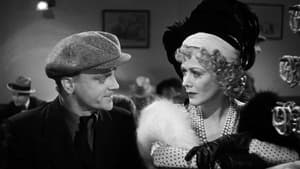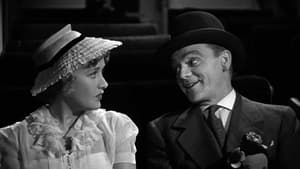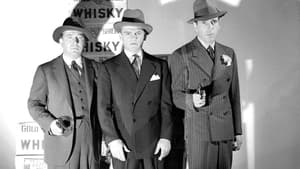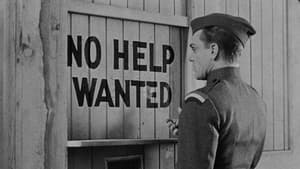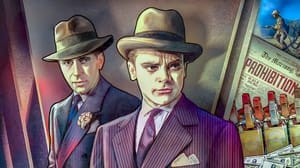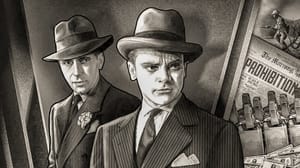Contact: [email protected]
Video Sources 0 Views
- Watch trailer
- The Roaring Twenties

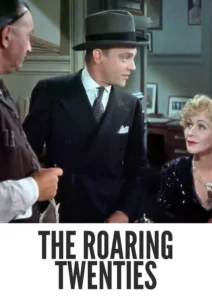
Synopsis
Table of Contents
ToggleReview: The Roaring Twenties (1939) – A Classic Tale of Prohibition-Era Intrigue and Romance

Introduction
“The Roaring Twenties” (1939) epitomizes the glamour, excitement, and danger of one of America’s most iconic decades. In this review, we’ll delve into the significance of this early colored film, exploring its portrayal of the Prohibition era and its enduring impact on cinematic history.
Check The Full Colorized Movies List
Check Our Colorized Movies Trailer Channel
Understanding The Roaring Twenties 1939: Director, Cast, and Genre
Directed by the legendary Raoul Walsh, “The Roaring Twenties” (1939) captures the essence of the Jazz Age with its dynamic storytelling and vibrant characters. The film features an all-star cast, including James Cagney, Humphrey Bogart, and Priscilla Lane, whose electrifying performances bring the era to life on screen. Blending elements of crime, romance, and tragedy, “The Roaring Twenties” (1939) immerses viewers in a world of speakeasies, gangsters, and forbidden love.
Exploring the World of The Roaring Twenties 1939: Plot and Characters
Set against the backdrop of Prohibition-era America, “The Roaring Twenties” (1939) follows the intertwining lives of three men—Eddie Bartlett, played by James Cagney, George Hally, portrayed by Humphrey Bogart, and Lloyd Hart, portrayed by Jeffrey Lynn—as they navigate the turbulent waters of bootlegging, betrayal, and romance. As their paths converge and diverge, they find themselves caught in a web of ambition, loyalty, and heartbreak that will forever alter the course of their lives.
The Art of Film Colorization
Film colorization serves as a transformative tool that enhances the visual experience of classic movies, breathing new life into timeless stories and captivating audiences with vibrant hues. By digitally adding color to black and white films, colorization allows viewers to immerse themselves in the rich tapestry of cinematic worlds, exploring every nuance and detail with fresh eyes and renewed appreciation.
Early Colored Films: A Brief History
The history of colored films traces its roots back to the early days of cinema, with filmmakers experimenting with various techniques to add color to their creations. From hand-tinted frames to early Technicolor processes, the evolution of colored film has been marked by innovation and ingenuity, paving the way for the development of modern colorization techniques that continue to captivate audiences to this day.
The Roaring Twenties 1939 and Its Early Colored Version
The decision to release “The Roaring Twenties” (1939) in a colorized format was met with both excitement and trepidation. While some welcomed the opportunity to experience the film in vibrant color, others expressed concerns about the potential impact on its visual aesthetic. Nevertheless, the early colored version of “The Roaring Twenties” (1939) offers viewers a fresh perspective on the tumultuous era, enhancing its immersive qualities and bringing its richly detailed world to life in stunning detail.
The Debate Over Film Colorization
The debate over film colorization continues to divide audiences and critics alike, with proponents praising its ability to breathe new life into classic movies and introduce them to a new generation of viewers, while detractors argue that it compromises the artistic integrity of the original work and diminishes its historical significance. As the debate rages on, filmmakers and audiences alike are left to ponder the merits and drawbacks of colorization in the ever-evolving landscape of cinema.
Examining The Roaring Twenties 1939 as an Early Colored Film
As with any colorized classic, the impact of colorization on “The Roaring Twenties” (1939) is a matter of personal interpretation. Some may argue that it enhances the film’s visual appeal and immerses viewers in its world, while others may feel that it detracts from the stark beauty of the original black and white version. Regardless of one’s stance on the issue, there’s no denying the enduring power of “The Roaring Twenties” (1939) as a timeless masterpiece that continues to captivate audiences with its thrilling action, memorable characters, and breathtaking cinematography.
Influence and Legacy: The Roaring Twenties 1939’s Impact on Cinema
“The Roaring Twenties” (1939) has left an indelible mark on the world of cinema, inspiring countless filmmakers and captivating audiences with its timeless tale of love, betrayal, and redemption. From its electrifying performances to its gripping narrative, the film continues to resonate with viewers of all ages, reaffirming its status as a beloved classic of the crime drama genre.
Director’s Cinematic Legacy: Beyond The Roaring Twenties 1939
Raoul Walsh’s influence extends far beyond “The Roaring Twenties” (1939), with a diverse body of work that continues to captivate audiences around the globe. From “High Sierra” to “White Heat,” Walsh’s films are celebrated for their dynamic storytelling, memorable characters, and groundbreaking visuals, solidifying his legacy as one of the preeminent directors of Hollywood’s Golden Age. Through his groundbreaking work, Walsh has left an indelible imprint on the world of cinema, inspiring generations of filmmakers to follow in his footsteps.
Themes Explored in The Roaring Twenties 1939
“The Roaring Twenties” (1939) explores a myriad of themes, from the allure of the American Dream to the dark underbelly of organized crime. Through its richly drawn characters and nuanced storytelling, the film invites viewers to ponder the complexities of ambition, loyalty, and the pursuit of happiness in a rapidly changing world. As audiences immerse themselves in the world of “The Roaring Twenties” (1939), they are reminded of the enduring truths that bind us together and the timeless struggles that define the human experience.
Reception and Controversy Surrounding The Roaring Twenties 1939
Upon its release, “The Roaring Twenties” (1939) received widespread critical acclaim, with many praising its gripping narrative, electrifying performances, and breathtaking cinematography. However, the decision to release the film in a colorized format sparked debate among purists, reigniting the age-old discussion surrounding film preservation and artistic integrity. Despite the controversy, “The Roaring Twenties” (1939) remains a beloved classic that continues to resonate with audiences of all ages, reaffirming its status as a timeless masterpiece of the crime drama genre.
Where to Watch The Roaring Twenties 1939 Online
For those eager to experience the timeless magic of “The Roaring Twenties” (1939), the film is readily available on popular streaming platforms such as Netflix, Amazon Prime, and Hulu. Whether you choose to watch it in its original black and white format or the early colored version, “The Roaring Twenties” (1939) promises to transport you to a world of intrigue, romance, and danger, where the spirit of the Jazz Age roars to life in vivid color.
FAQs About The Roaring Twenties 1939
Q: Is “The Roaring Twenties” (1939) based on a true story? A: No, “The Roaring Twenties” (1939) is a fictional tale crafted by screenwriter Jerry Wald, who drew inspiration from the tumultuous events of the Prohibition era to create a gripping narrative that continues to captivate audiences to this day.
Q: Who are the main actors in “The Roaring Twenties” (1939)? A: “The Roaring Twenties” (1939) features an ensemble cast led by the incomparable James Cagney, whose electrifying performance as Eddie Bartlett anchors the film with charisma and intensity. Humphrey Bogart and Priscilla Lane deliver standout performances as George Hally and Jean Sherman, respectively, adding depth and dimension to the film’s rich tapestry of characters.
Q: What awards did “The Roaring Twenties” (1939) win? A: While “The Roaring Twenties” (1939) did not win any major awards, it received critical acclaim for its gripping narrative, electrifying performances, and breathtaking cinematography. The film remains a beloved classic of the crime drama genre, beloved by audiences around the world for its timeless tale of love, betrayal, and redemption.
Q: Why was “The Roaring Twenties” (1939) released in a colorized format? A: The decision to release “The Roaring Twenties” (1939) in color was made to introduce the film to a new generation of viewers and enhance its visual appeal for modern audiences. While the choice to colorize the film sparked debate among purists, it ultimately allowed “The Roaring Twenties” (1939) to reach a wider audience and ensure its continued relevance in the annals of cinematic history.
Conclusion
“The Roaring Twenties” (1939) stands as a timeless testament to the enduring allure of one of America’s most iconic decades. Through its gripping narrative, electrifying performances, and breathtaking cinematography, the film transports audiences to a world of intrigue, romance, and danger, where the spirit of the Jazz Age roars to life in vivid color. Whether viewed in its original black and white format or the early colored version, “The Roaring Twenties” (1939) remains a beloved classic that continues to captivate audiences of all ages, reaffirming its status as a timeless masterpiece of the crime drama genre.
